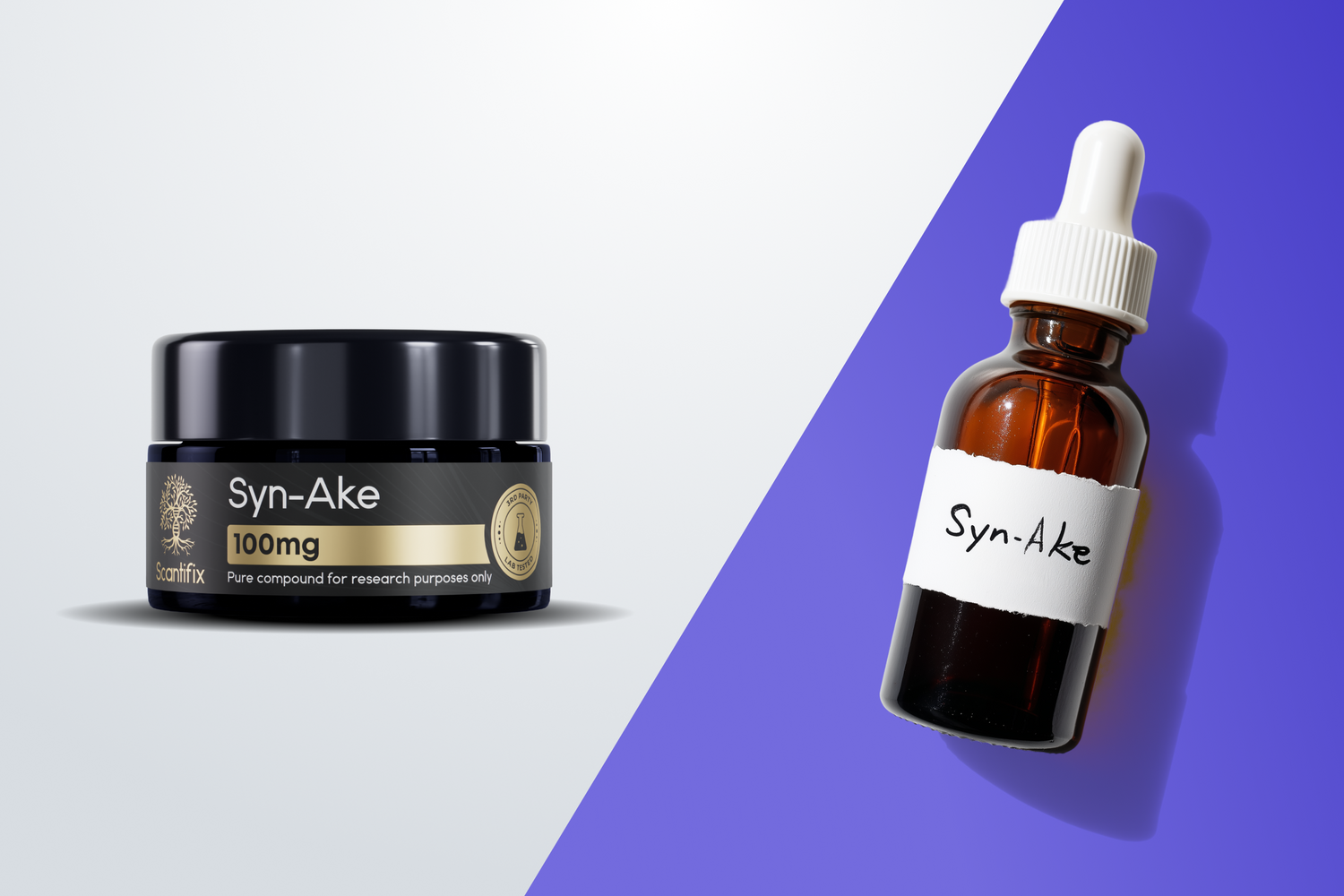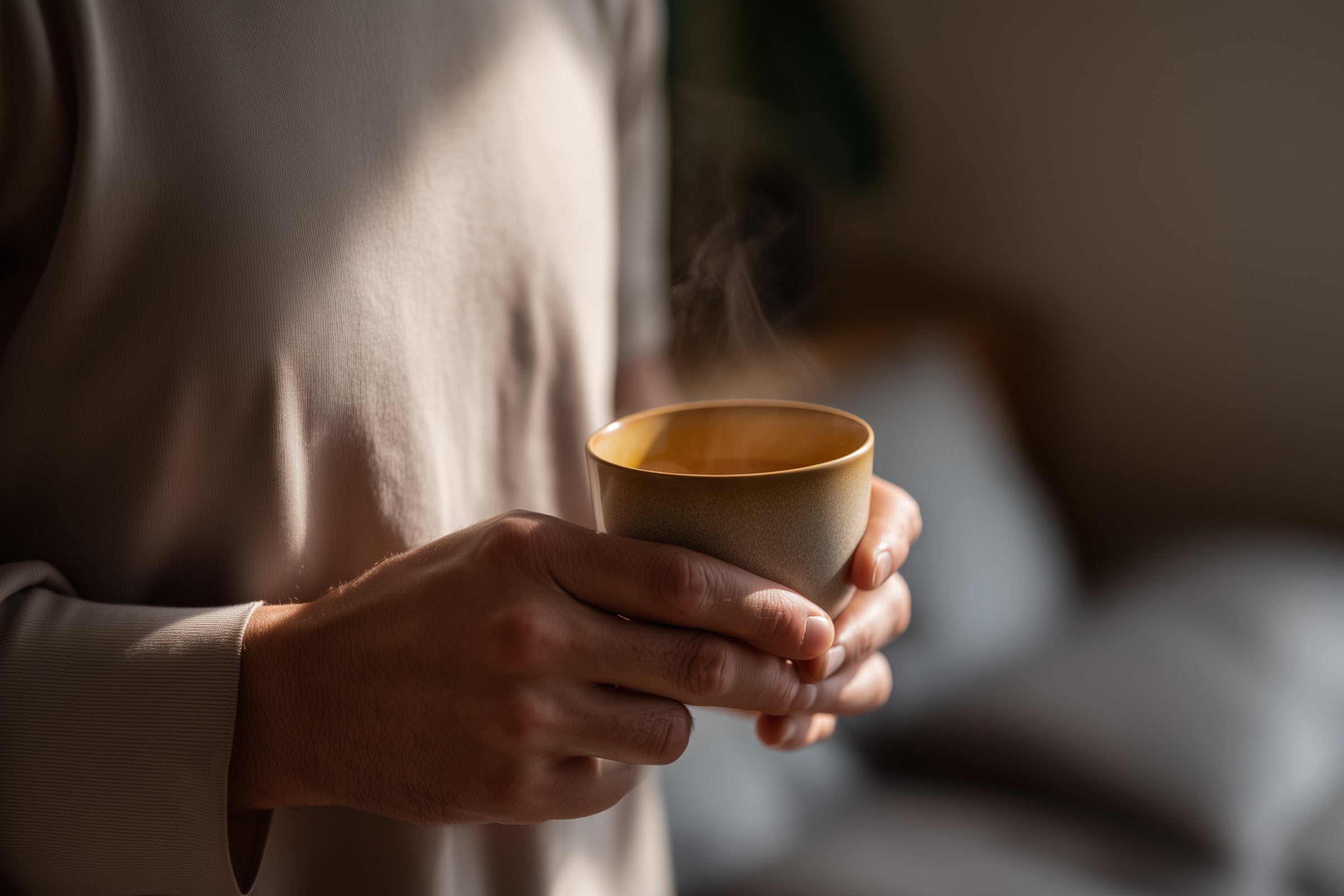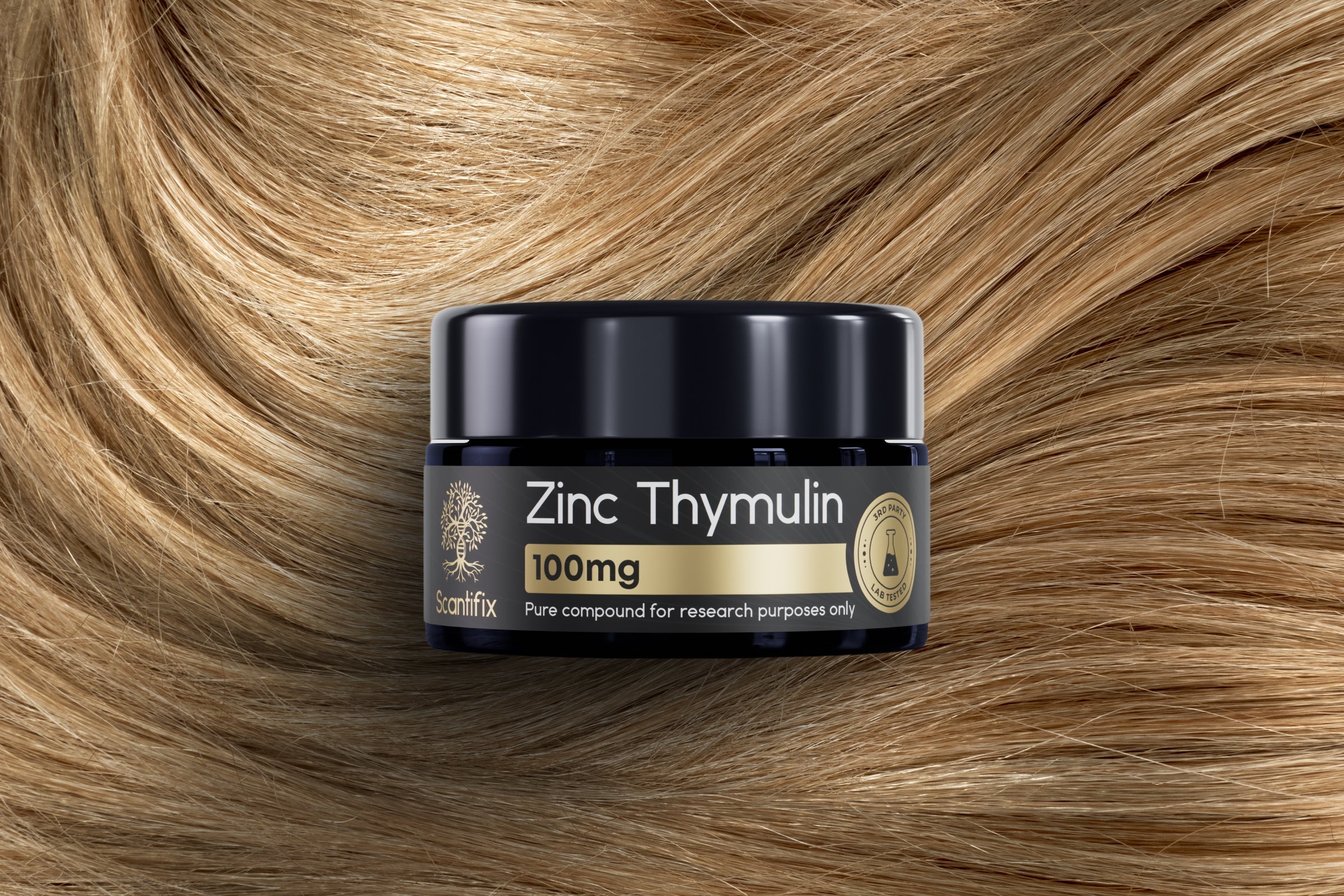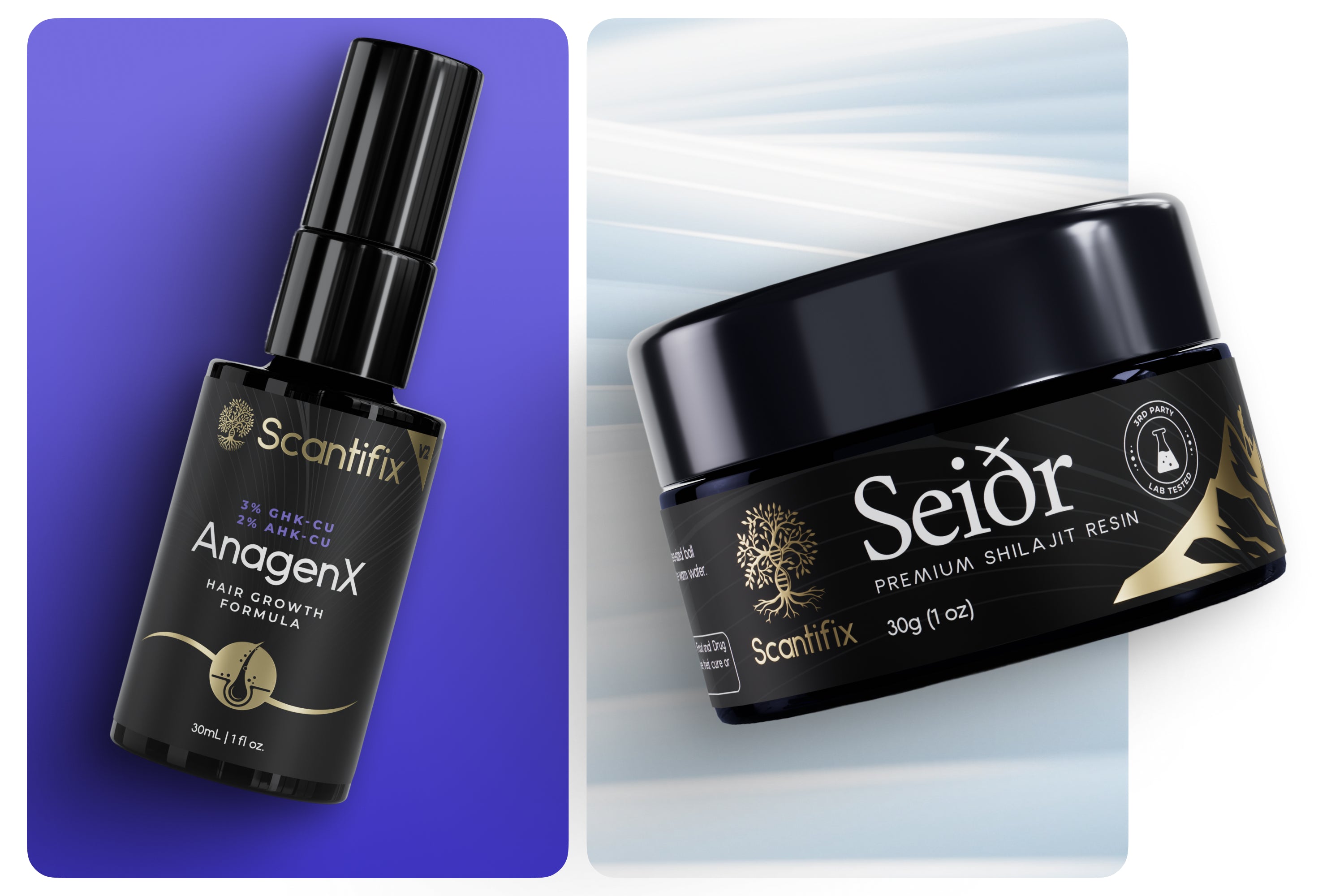We’ve always believed that great skincare starts with asking the right questions. What’s actually necessary? Is there a better alternative for that ingredient? And how can we do more with less? At Scantifix, those questions led us to a simple truth: the most effective formulas often come from the purest possible ingredients. That’s why we offer our peptides in their raw, unadulterated form so you can reconstitute and create your own custom serums with full control over what touches your skin.
It might sound a little intimidating, but reconstituting peptides for DIY serums is easier than you might think. Whether you’re new to raw peptides or already familiar with them, this guide walks you through how to turn pure peptides into a finished topical serum and clears up some of the most common questions and misconceptions along the way.
What Is Peptide Reconstitution?
Raw peptides are shipped in their raw form with no fillers, buffers or additives, meaning they are in their pure form. This form isn’t ready for direct application; it needs to be reconstituted into a water-based solution that allows the peptide to interact properly with your skin.
Reconstitution simply means adding a compatible liquid carrier (in this case, hyaluronic acid) to dissolve the peptide into a usable serum. The process is easy and doesn’t require any special equipment. You just need a clean workspace and a little patience.
Why Manual Reconstitution Is Best
When you make your own peptide serum, you’re taking full control of your skincare.
Pre-made serums often contain preservatives, fillers, fragrances, or stabilizers that dilute the active ingredients. Manual reconstitution eliminates that uncertainty. You know exactly what’s in your bottle: high-purity peptides and a clean base that you’ve chosen yourself. And you are guaranteed that the peptides themselves have not been sitting in solution and degraded for the past 12-24 months leaving you with mere trace amounts, if any, active peptide left.
You also get flexibility. You can adjust the concentration, stack multiple peptides together, or keep them separate depending on your skin goals. Whether you’re supporting collagen repair, targeting fine lines, or reinforcing the skin barrier, reconstituting peptides yourself means you control the formulation from start to finish.
What You’ll Need
You don’t need a lab setup. Just a few clean tools and high-quality ingredients are all it takes.
Essentials:
-
- Your chosen Scantifix raw peptides
- 1 oz bottle of hyaluronic acid (HA) — we recommend clean, minimal formulas such as Cosmedica Pure Hyaluronic Acid Serum
- Non-toxic disinfectant or alcohol wipes for your workspace and hands
Optional but helpful:
-
- A clean glass cup or beaker
- A handheld milk frother for peptides that are a little harder to dissolve
- A small glass or metal funnel for easier pouring
To maintain freshness and stability, always refrigerate your raw peptides until you’re ready to use them.
How to Reconstitute a Raw Peptide (Standard Method)
For most peptides, such as GHK-Cu, Argireline, SNAP-8, or Syn-Ake, this straightforward method works perfectly.
-
- Prepare your workspace. Sanitize your hands and any surfaces or tools you’ll be using.
- Open the peptide jar. Remove the lid and gently tap the seal to dislodge any powder stuck underneath.
- Add hyaluronic acid. Pour your HA directly into the peptide jar almost to the brim. Don’t underfill — too little liquid may prevent full dissolution.
- Let it dissolve. Depending on the peptide and temperature, this can take anywhere from 10 minutes to a few hours. Stir gently with the dropper if you’d like to help it along.
- Transfer the serum. Once the peptides are fully dissolved, pour the mixture back into your HA bottle using the dropper or a clean funnel.
- Store in the refrigerator. Your finished peptide serum should be kept cold for optimal freshness.
If you’re using one 100 mg jar of Scantifix raw peptides, you’ve just created a 0.33% peptide serum, and if you’re using a 300 mg jar, you’ve created a 1% serum. These are ideal concentrations for topical serums made from raw peptides, which are 5-10x more pure and potent than pre-made, commercial serums.
Need a little more guidance? Check out our reconstitution videos.
When to Use Mechanical Mixing
Some peptides, like Syn-Coll, Matrixyl, or Syn-Tacks, benefit from gentle mechanical help to disperse evenly. The sequences of amino acids of these particular peptides can make dissolving slower.
Here’s the process:
-
- Pour your HA base into a clean glass.
- Insert the milk frother into the glass and switch it on.
- While mixing, add your raw peptide powder into the liquid. Let it blend for 5–10 seconds.
- If residue remains in the peptide jar, add a few drops of HA to loosen it, then pour it back into the glass and mix again for a couple seconds.
- Let the bubbles settle before transferring the finished serum back into the HA bottle.
A bit of foam or bubbling is normal. It will dissipate as the serum rests. Once settled, store in the refrigerator as usual.
Prefer a visual guide? Watch our mechanical reconstitution videos on the Scantifix YouTube channel.
How to Combine Multiple Peptides in One Serum
If you’d like to create a blend of multiple peptides — say, a smoothing and firming serum that combines GHK-Cu, Syn-Ake, and SNAP-8 — follow the same process. Add HA to each of the peptide jars, allow to dissolve, and transfer both back into the HA bottle. Check out our video guide.
If a peptide in your desired blend requires mechanical help, Syn-Coll, Matrixyl, or Syn-Tacks, the process is a little bit different. Reconstitute that peptide first by following the “mechanical mixing” steps above. After transferring that back into the HA bottle, continue with reconstituting the remaining peptides according to the “standard method.” Here’s another video guide to help explain.
This ensures that each peptide dissolves fully before being combined. Mixing too early or adding multiple powders at once can lead to uneven concentrations or incomplete dissolution.
Common Questions and Misconceptions
Once you’ve gone through the process a few times, it quickly becomes second nature. Still, there are some common questions that tend to come up when working with raw peptides, especially the first time.
Why does 300mg of GHK-Cu look like less than 100mg of Snap-8?
Raw peptides are shipped in their pure forms, with no fillers, buffers or additives. In this form, volumes and appearance will differ. For example, GHK-Cu is a tripeptide consisting of 3 amino acids attached to copper (Cu), while Snap-8 is an octapeptide consisting of 8 amino acids. 300 mg of GHK-Cu will be heavier, but the volume will appear less than 100 mg of Snap-8 which is typically more voluminous. It all comes down to each peptide’s unique composition in their raw state. This is different from lyophilized peptides which contain buffer agents to make them look uniform.
Our raw peptides are carefully measured by hand using high-precision scales and the weight is confirmed by a 2nd technician.
Why do different peptides look so different?
Each peptide has a unique amino acid composition and molecular weight. Some appear fluffy or crystalline; others form denser clumps. Some are even bright blue, like GHK-Cu. Visual differences don’t affect purity or performance.
Why does my peptide look different from last time?
Temperature and humidity during production can slightly alter appearance. Crystallization or sticking to the container is completely normal. Just loosen it gently with your HA dropper when mixing.
How long will my peptide serum last?
If handled cleanly and stored in the refrigerator, your serum should remain stable for 3–6 months.
What does the concentration % really mean?
When commercial serums advertise “10% peptides,” they’re usually referring to 10% of a solution containing only a few milligrams of actual raw peptide by weight. In contrast, one Scantifix jar contains either 100 mg or 300 mg of pure peptide, yielding a true 0.33% or 1% concentration when reconstituted with 1 oz of HA. This is easily 5-10x more potent than any commercial peptide product available.
Can I increase the concentration?
Using pure, raw peptides already creates a highly potent serum. As mentioned earlier, many commercial serums that claim high percentages of peptides actually contain only small amounts of the active ingredient within a larger solution. A 0.33% or 1% concentration made from raw peptides is already significantly more active and effective than most pre-made formulas. Increasing the concentration beyond this doesn’t necessarily improve results and may raise the risk of irritation.
That said, there are a few exceptions. For example, GHK-Cu can be used safely at up to around 3%, depending on your skin’s tolerance and goals. Always start low and observe how your skin responds before adjusting upward.
Do I have to use hyaluronic acid?
Peptides are water-soluble and therefore can be reconstituted with any water-based serum or gel with a clean formula. We recommend hyaluronic acid because it’s stable, biocompatible, and supports the skin’s natural hydration. It also provides the ideal consistency for topical application without needing preservatives or additional stabilizers.
Avoid reconstituting peptides with creams or oils, as peptides do not dissolve well in fat-based formulas and may lose their intended effectiveness.
How many different peptides can I combine in one formula?
We recommend limiting the amount of different peptides to four within a single formula. Beyond four, the potential risk of irritation increases. It also becomes difficult to evaluate the effects of each peptide and to determine which are working best to meet your skincare goals.
Are peptides too sensitive to handle or stir?
While peptides should be treated gently, they aren’t fragile to the point of inaction. Light stirring or tapping is safe and often helps them dissolve more efficiently.
The Scantifix Approach: Purity, Simplicity, and Control
Reconstituting your own peptides might seem intimidating at first, but it’s actually one of the simplest ways to take control of your skincare. In just a few steps, you’ve created a serum that’s fresher, cleaner, and more potent than most products on the shelf.
Every peptide in our catalog is third-party tested for purity and stability, ensuring that what you’re working with is exactly what’s on the label. No fillers. No hidden preservatives. Just high-quality ingredients and transparent science.
If you’re ready to take full control of your skincare by creating your own formulations, explore our collection of high purity, raw peptides, designed to make innovative, peptide-powered products accessible and effective.






Leave a comment
All comments are moderated before being published.
This site is protected by hCaptcha and the hCaptcha Privacy Policy and Terms of Service apply.